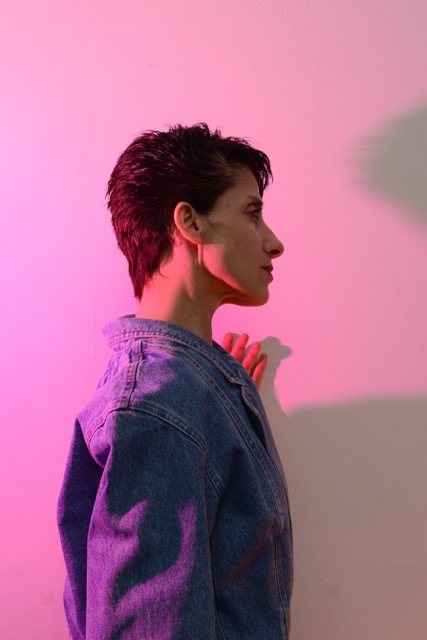
Claudia Triozzi received training in classical ballet and contemporary dance in Italy. She moved to Paris in 1985. In addition to her work as a performer (with Odile Duboc, Georges Appaix, François Verret, Alain Buffard, Xavier Leroy and Xavier Boussiron), she creates her own pieces in which she develops the direction of both the production and the performance. Her research work focuses on the process of transmission where the experience of doing, of sharing, of commitment to the other, bear witness to a thought process continuously out to conquer new spaces of subjectivity whilst having a fresh take on time.
She creates iconoclastic pieces from which dance never comes out unscathed (among others Park, 1998 ; Dolled Up, 2000 ; The Family Tree, 2002 ; Stand, 2004 ; Opera’s Shadows,2005 ; Up To Date, 2007 ; La prime 2008, 2008 ; Ni vu ni connu, 2010). Claudia Triozzi always sets herself the task of putting preconceived ideas one might have regarding choreographic pieces into question. The space of representation, the ways of representation inherent to the dancer and the very notion of performance are the object of a perpetually renewed questioning. From piece to piece, from exhibition space to theatre stage, Claudia Triozzi pushes back the limits of the body and the spaces of visibility reserved for the dancer. Her last creations have brought voice work that upsets audience expectations to the fore by questioning the place of dance. Since the piece The Family Tree (2002), Claudia Triozzi has effectively been exploring voice work by passing through experiences that will propel her into writing texts and songs. She develops sound qualities consisting of a vocabulary of “noises” albeit lyrical, in which the voice expresses itself through paragraphs of time that draw inspiration from the cinema, the theatre and radio. In March 2011 invited by the Musée de la Danse in Rennes, she starts a new project entitle Pour une thèse vivante, in which she reveals her reflexion about the artist’s writing.
Her work has been developing equally well on stage, on video or through installations, exhibited as they are in museums or in galleries. She presents her pieces on stages in Europe as well as in the United States, South Korea and in Japan where she benefited from an AFAA, Villa Kujoyama, hors les murs grant (2004). She develops a pedagogy related to her own work and teaches in different art schools in France and abroad. In 2011, she receives a research and dance heritage grant initiated by the CND (Pantin) and a research grant at the Akademie Schloss Solitude in Stuttgart.
Productions:
Pour une thèse vivante, extrait, au festival Move, Centre Pompidou (2018), Un CCN en terre et en paille Pour une thèse vivante épisode 5 (2017), Habiter pour créer (2017), Accents (2017), Park de 1998 à aujourd’hui (2016), Comparses pour une thèse vivante épisode 4 (2015), Avanti Tutta 30 ans dans un an Pour une thèse vivante épisode 3 (2014), Boomerang (ou le retour à soi) (2013), Pour une thèse vivante épisode 2 (2013), Pour une thèse vivante (2011), IDÉAL (2011),Ni vu ni connu (2010), La prime 2008 (2008), Up to date (2007), Fais une halte chez Antonella (2006), Strip-tease (2006), La baronne et son tourment (2006), Opera’s Shadows (2005), Stand (2004), The Family Tree (2002), Dolled Up (2000), Bal Tango (1999), Park (1998), Gallina Dark (1996), Les Citrons (1992), La Vague (1991).








